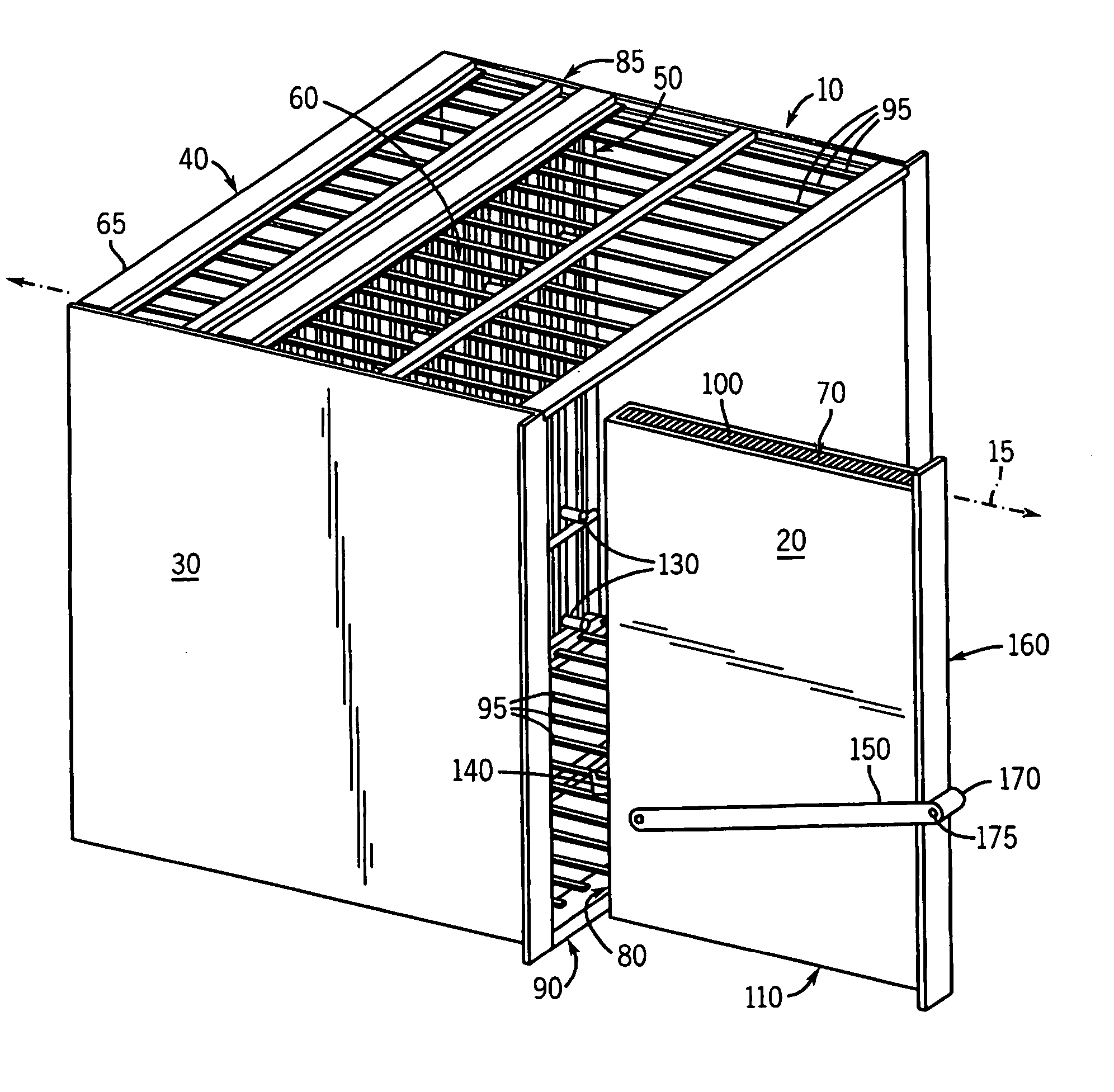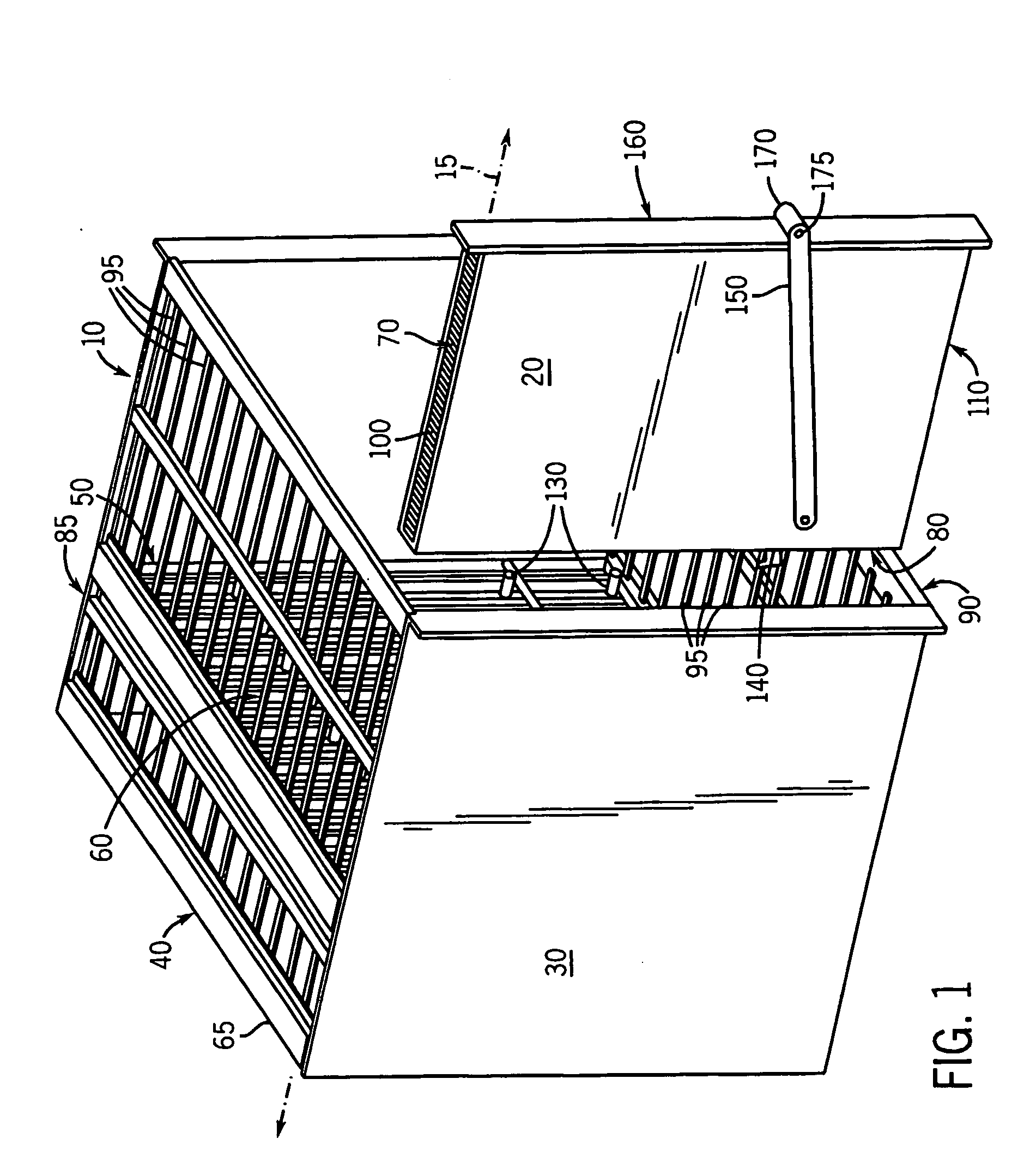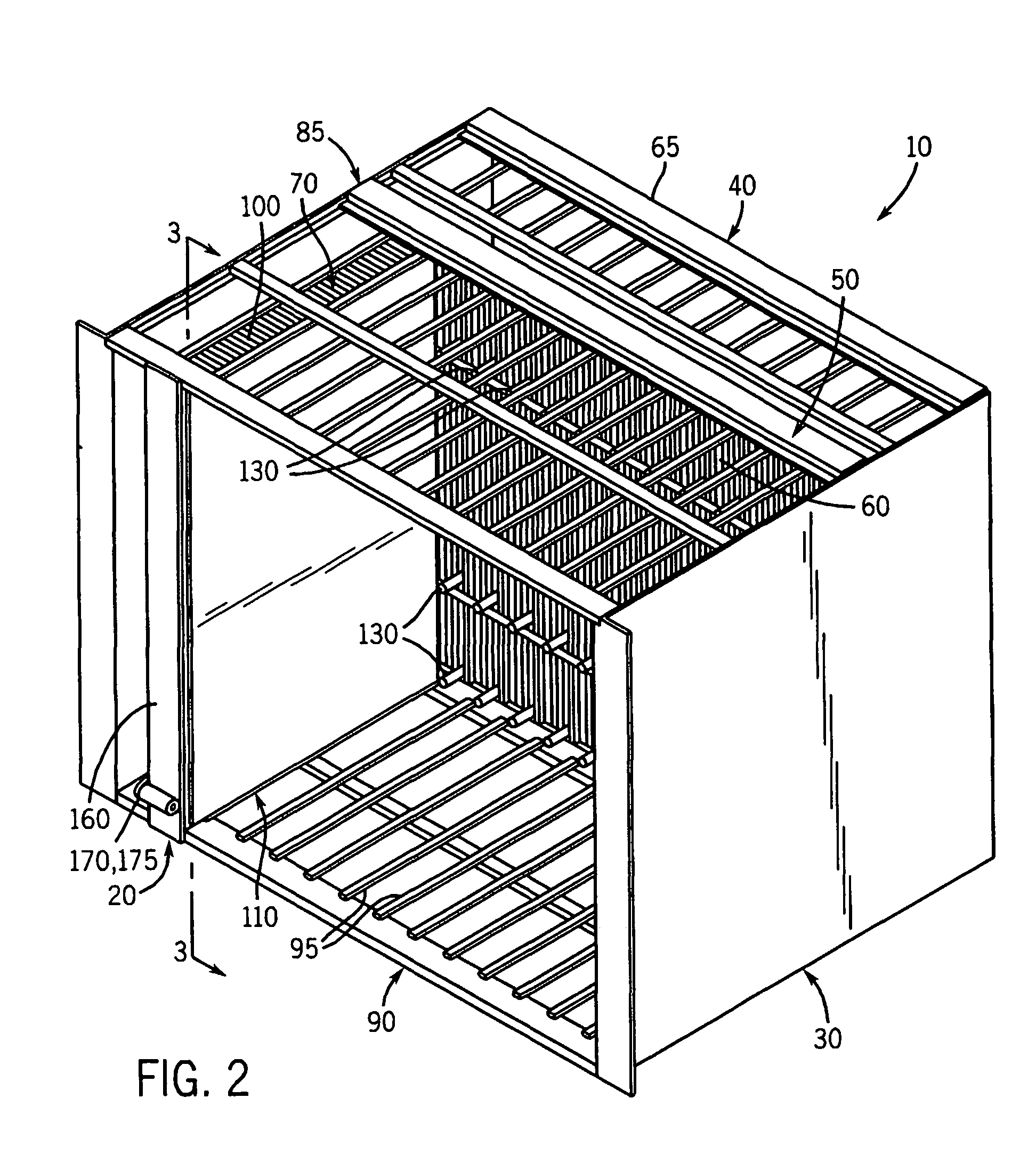System for insertion and extraction of a printed circuit board module into and out of a subrack
a technology of printed circuit board modules and subracks, which is applied in the direction of electrical apparatus construction details, casings/cabinets/drawers, casings/cabinets/drawers details, etc., can solve the problems of large forces affecting the stress on the plug-in modules, the inability to perform the addition, replacement or upgrading of plug-in modules in electronic equipment subracks/racks, and the increase in the number and density of connectors on the subracks
- Summary
- Abstract
- Description
- Claims
- Application Information
AI Technical Summary
Problems solved by technology
Method used
Image
Examples
Embodiment Construction
[0021] Referring to FIGS. 1 and 2, an exemplary subrack 10 is shown in conjunction with a plug-in module 20 that is capable of being inserted into and extracted from the subrack. More specifically, FIG. 1 shows the plug-in module 20 separated from the subrack 10, prior to its insertion into the subrack or after its extraction from the subrack, while FIG. 2 shows the plug-in module in its fully-inserted position within the subrack. In the embodiment shown, the subrack 10 includes walls 30 and other structural support components 40. In alternate embodiments, the subrack 10 can include subpartitions or other components not shown, and depending upon the embodiment also can form part of a larger rack or other piece of equipment.
[0022] The subrack 10 also includes a surface 50 on which are positioned connectors 60 that are connected to various other electrical components (not shown). The surface 50 in the present embodiment is a backplane, although in alternate embodiments it could be a ...
PUM
 Login to View More
Login to View More Abstract
Description
Claims
Application Information
 Login to View More
Login to View More - R&D
- Intellectual Property
- Life Sciences
- Materials
- Tech Scout
- Unparalleled Data Quality
- Higher Quality Content
- 60% Fewer Hallucinations
Browse by: Latest US Patents, China's latest patents, Technical Efficacy Thesaurus, Application Domain, Technology Topic, Popular Technical Reports.
© 2025 PatSnap. All rights reserved.Legal|Privacy policy|Modern Slavery Act Transparency Statement|Sitemap|About US| Contact US: help@patsnap.com



